Good Installations
Case 1
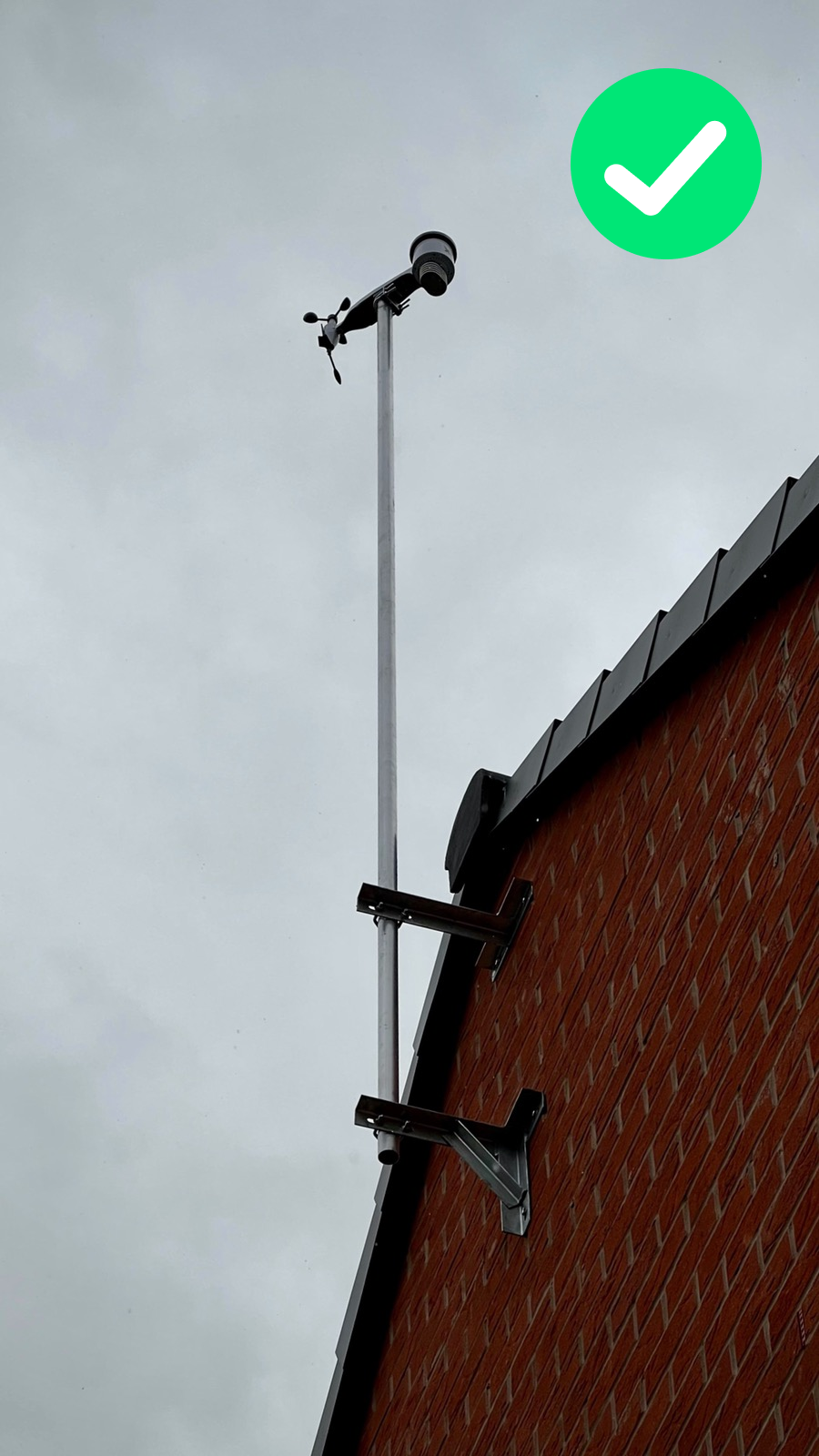
The station has been deployed at the highest point of this apartment, which is located at an area, where buildings present similar heights. Thus, the outdoor sensor is over the level of any object around. It is also placed on a >2m mast and, hence, temperature/humidity is not affected by the roof’s material.
Case 2
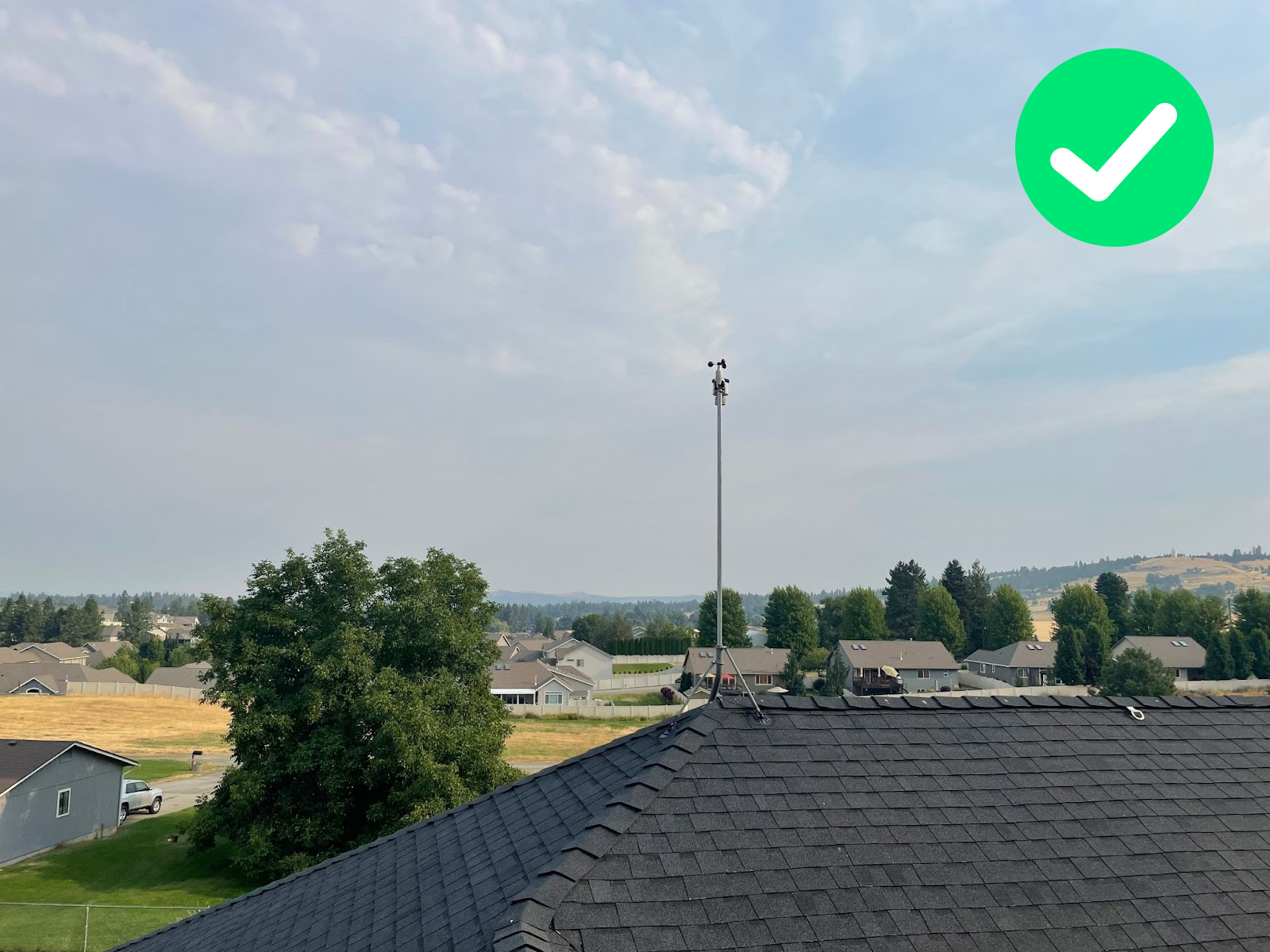
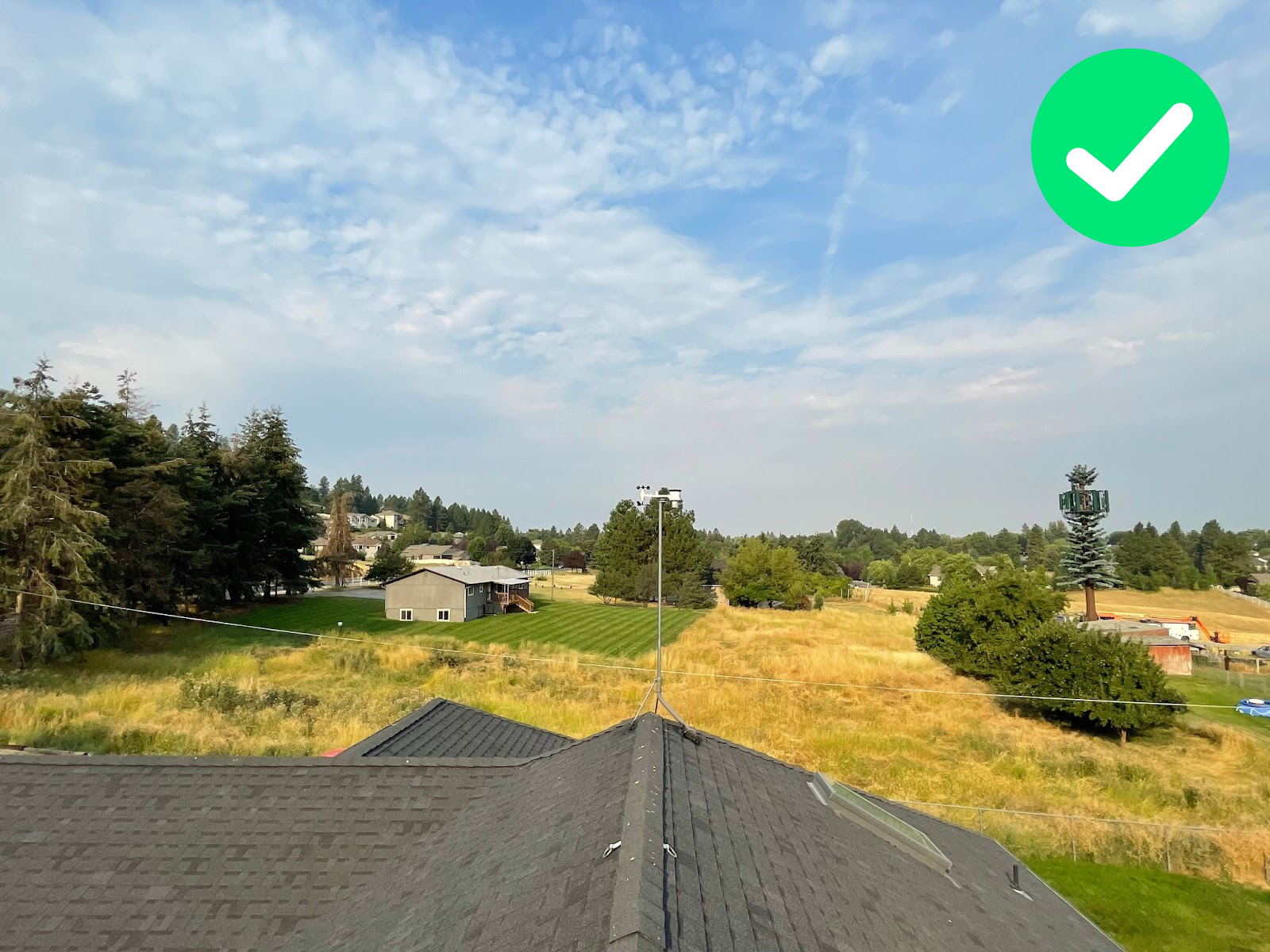
The station has been deployed at the highest point of this apartment, which is located at an area, where other obstacles are not much higher. Notice that the level of the outdoor sensor is very close to the level of the tree tops, and so wind/rain measurements shouldn’t be affected. It is also placed on a >2m mast and, hence, temperature/humidity is not affected by the roof’s material.
Case 3
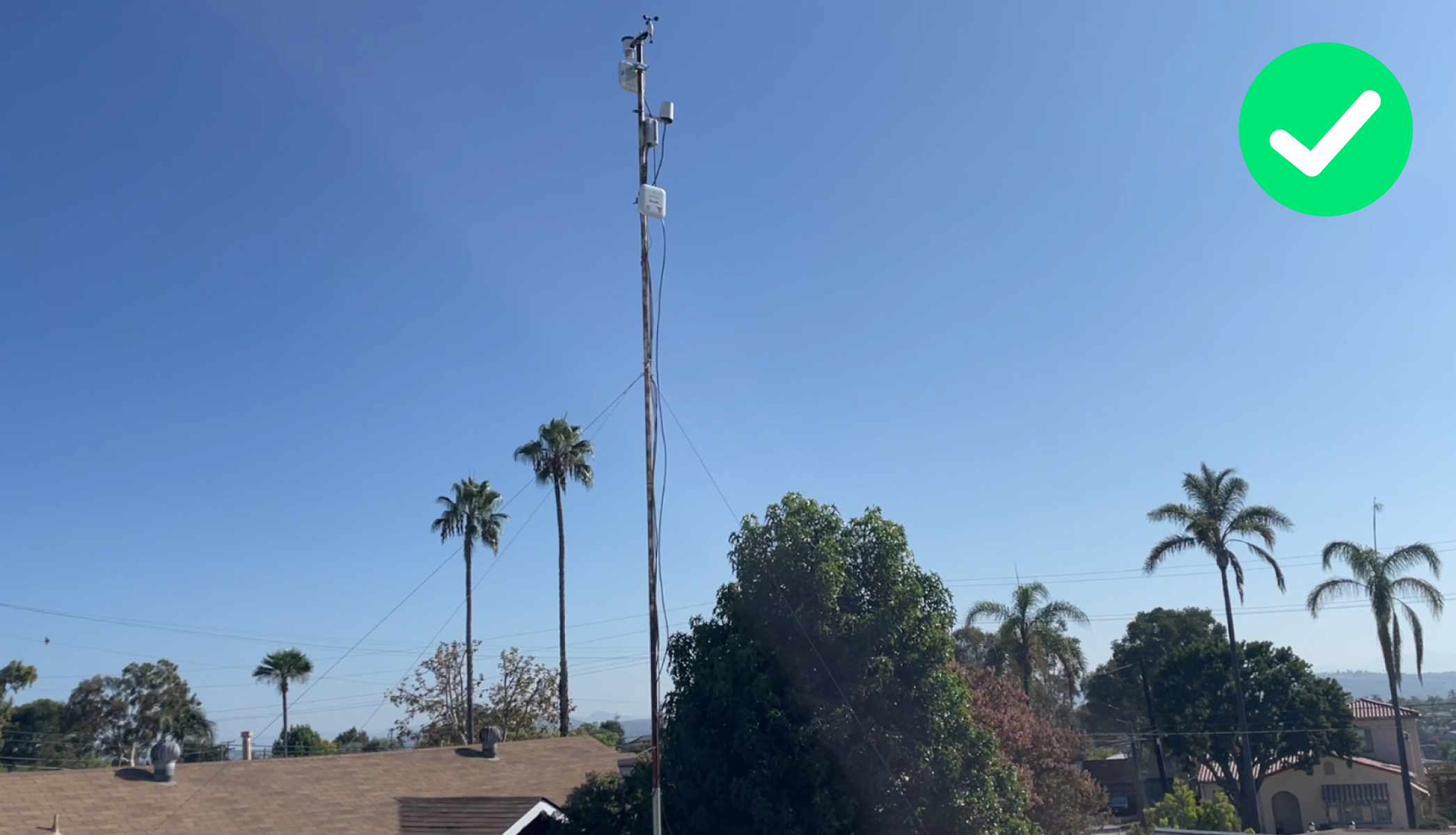
The station has been deployed at the highest point of this apartment, which is located at an area, where other obstacles are not much higher. In addition, the mast is ~7m makes the deployment quite ideal. Sparse thin coconut trees shouldn’t be able to affect measurements. In a case like that the user should tight firmly the wires that stabilise the mast. Otherwise, the mast may significantly oscillate, producing faulty wind and especially rain measurements.
Case 4
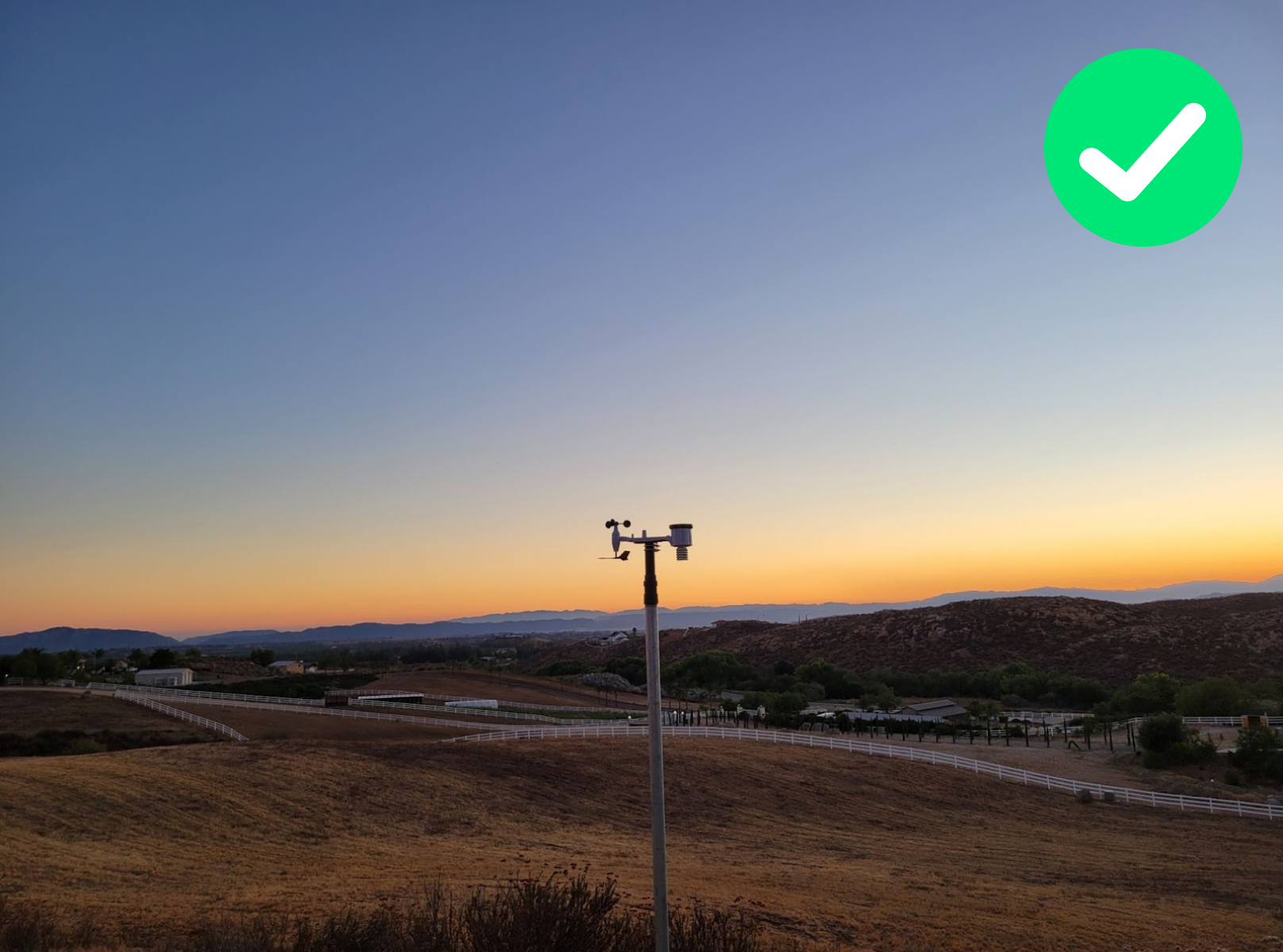
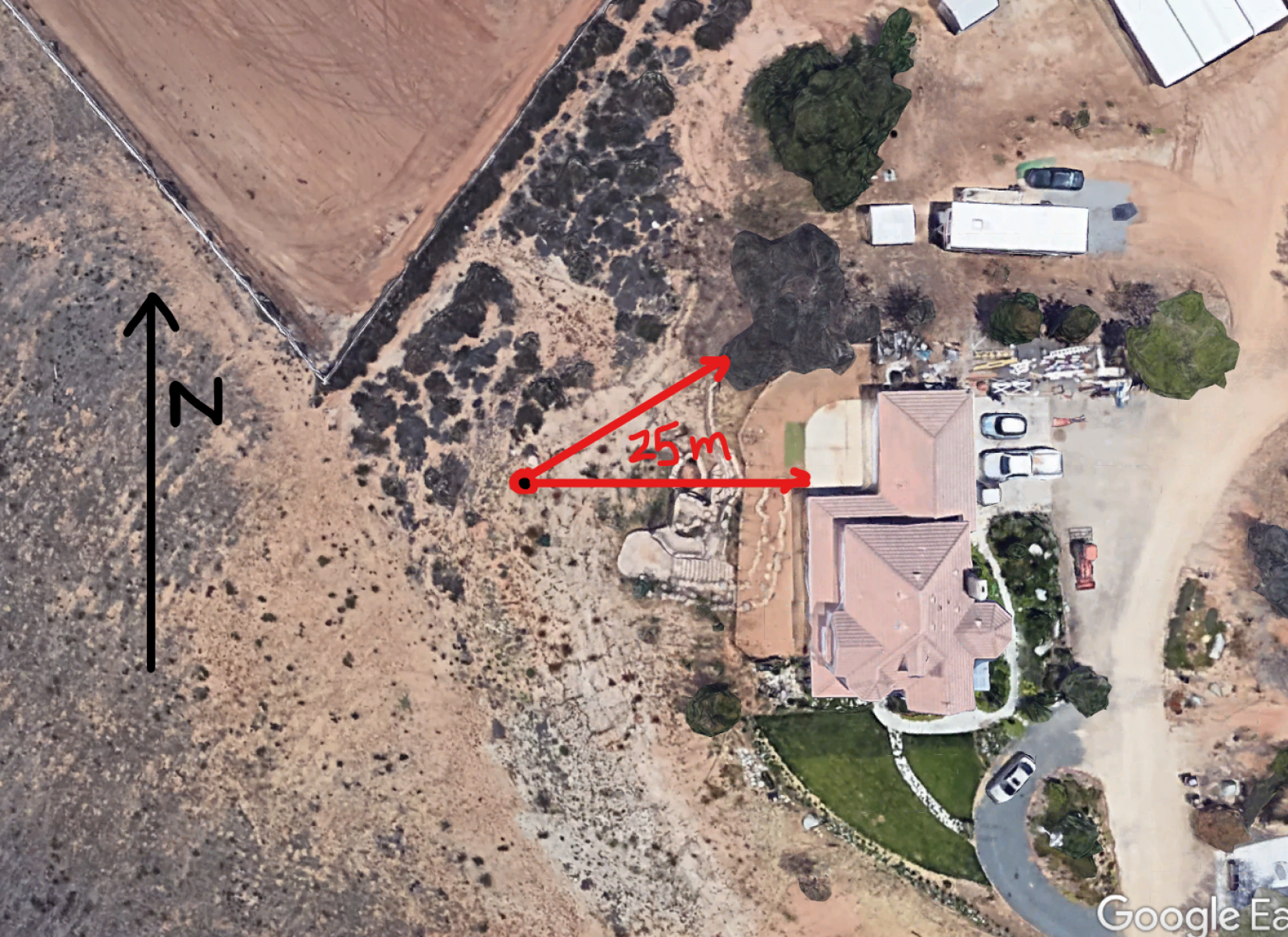
The station has been deployed at a 2.5m mast with a clear horizon with no obstacles. The only obstacle is a house (4-7m height) being located at the east, but it’s 25m away.Thus, the maximum difference of obstacle-station level heights is 7-2.5=4.5m, which means that the distance is at least >5 times the height of the obstacle. Although the station is considered as well deployed, optionally would be placed on a 5m mast to completely follow the WMO criteria.
Deployments that need attention
Case 5

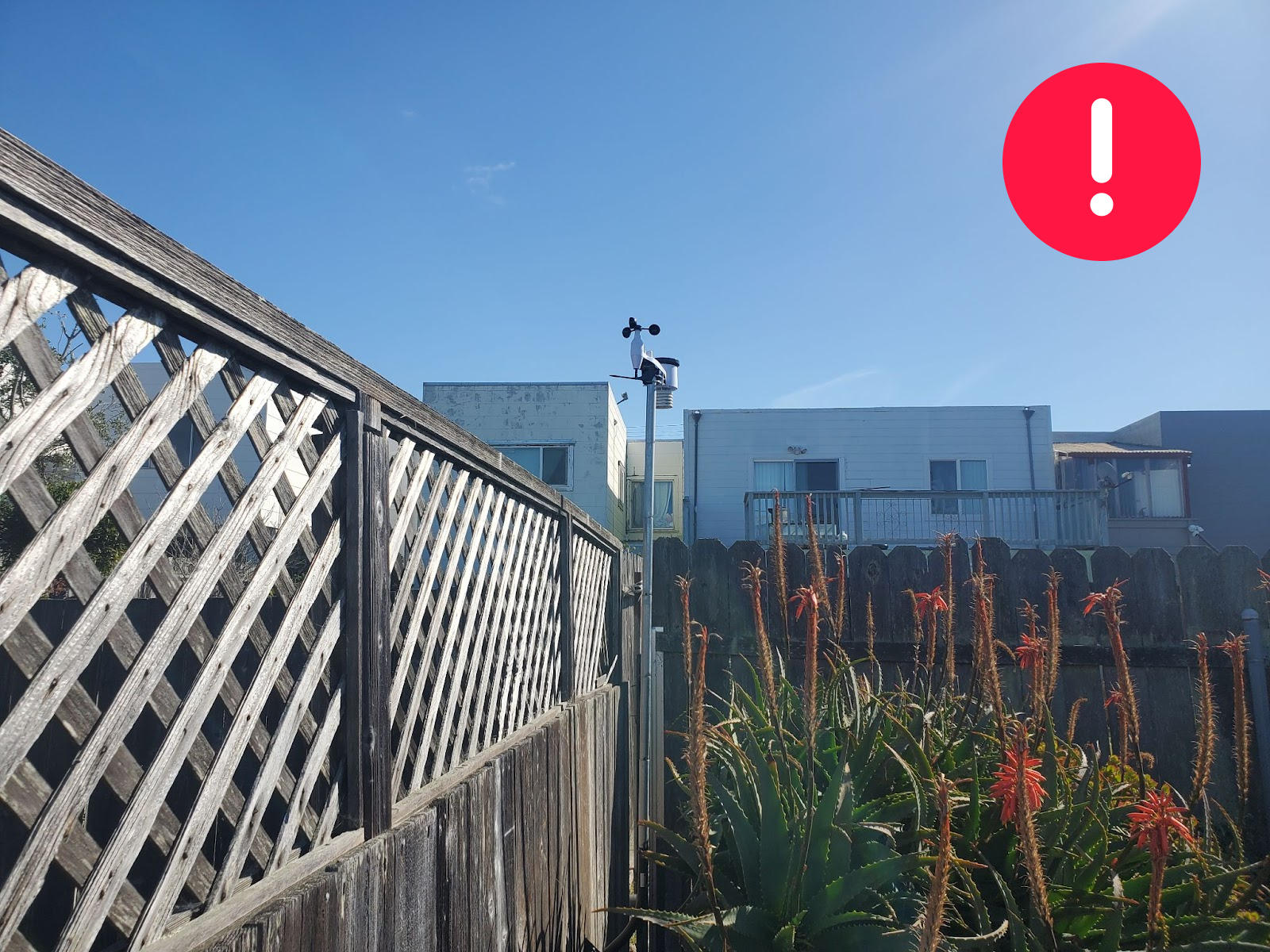
The station has not been deployed at the highest possible place because there are higher buildings around. It is placed on a fence being only ~1m higher from it and there are objects (like the bush) that are closer than 2m, which is the smallest allowed distance between the sensors and any horizontal surface under the level of the outdoor sensor.
The fence can cause turbulence that may affect the wind measurements. The buildings around may create a “wind shade” and, thus, wind speed will be lower than expected, while wind direction will be more variable than expected. Finally, as the bush is quite close, this may affect temperature and humidity but in a less significant way. Solar radiation may not be affected, but there are not enough photos to come to such a conclusion.
The station should be moved to the terrace of the house (which is not visible in the photos). If the house terrace is at the level of the surrounding terraces and the outdoor sensor is placed on a >2m mast, then the weather station should be considered as well deployed.
Case 6
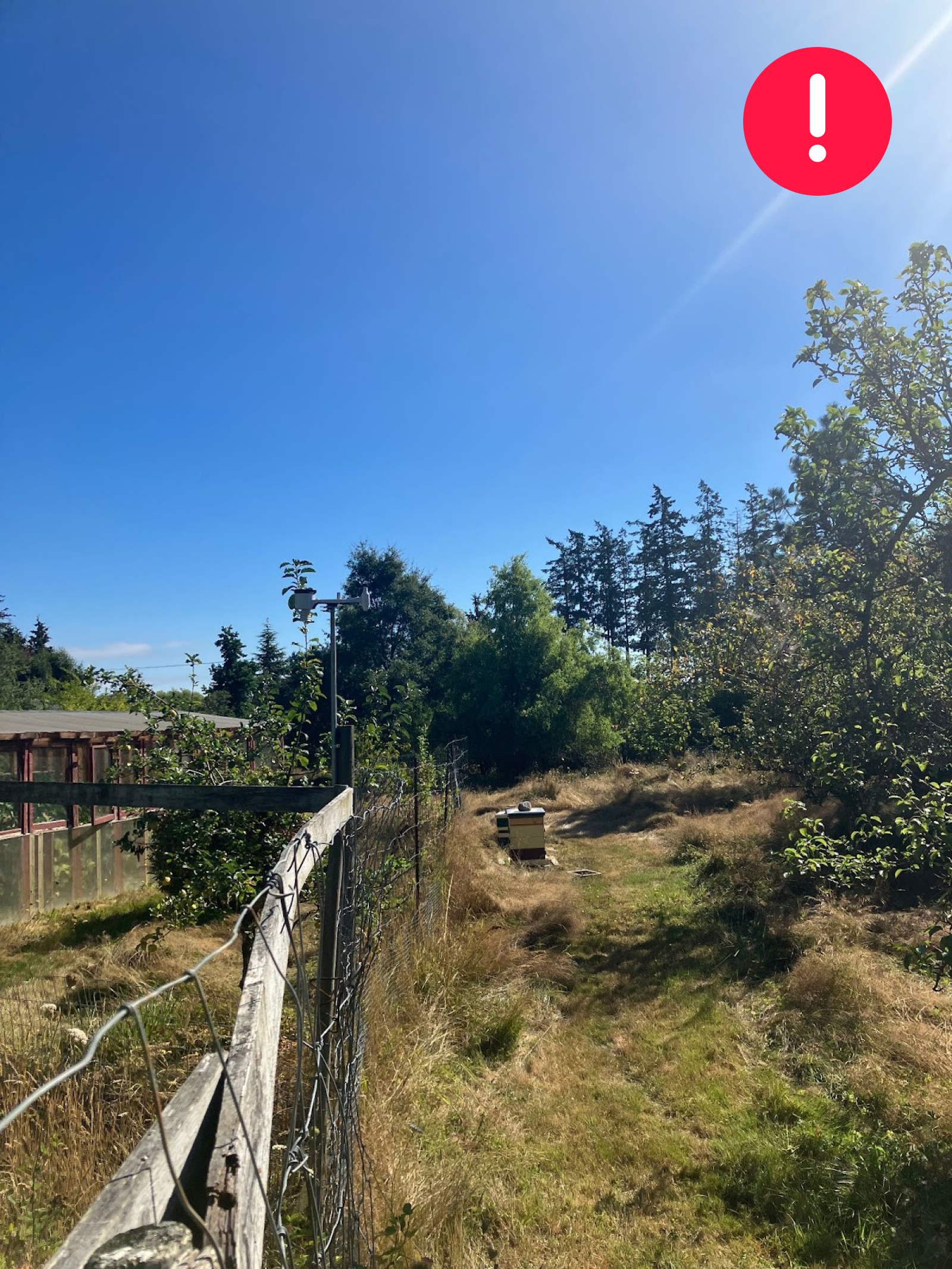
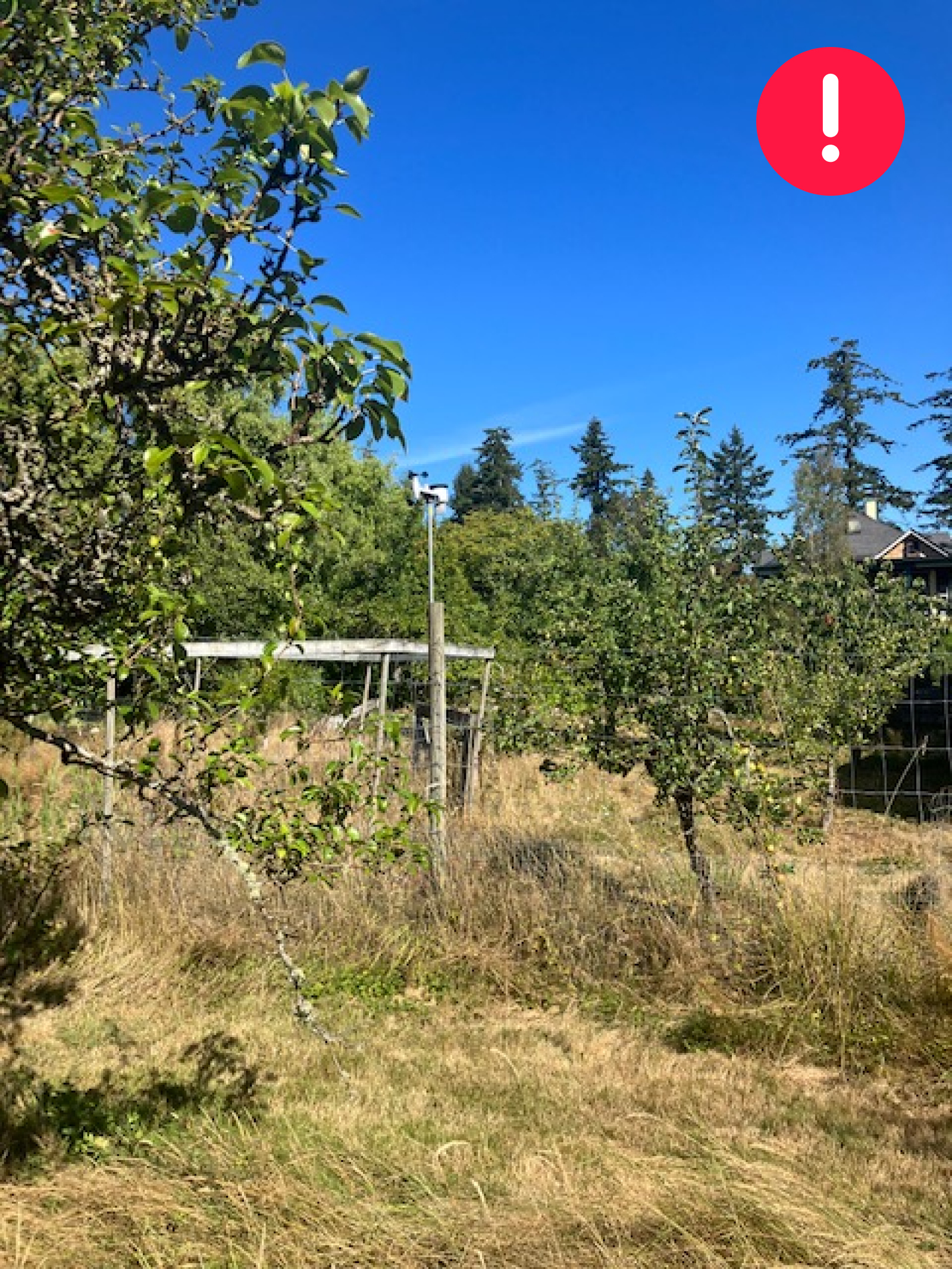
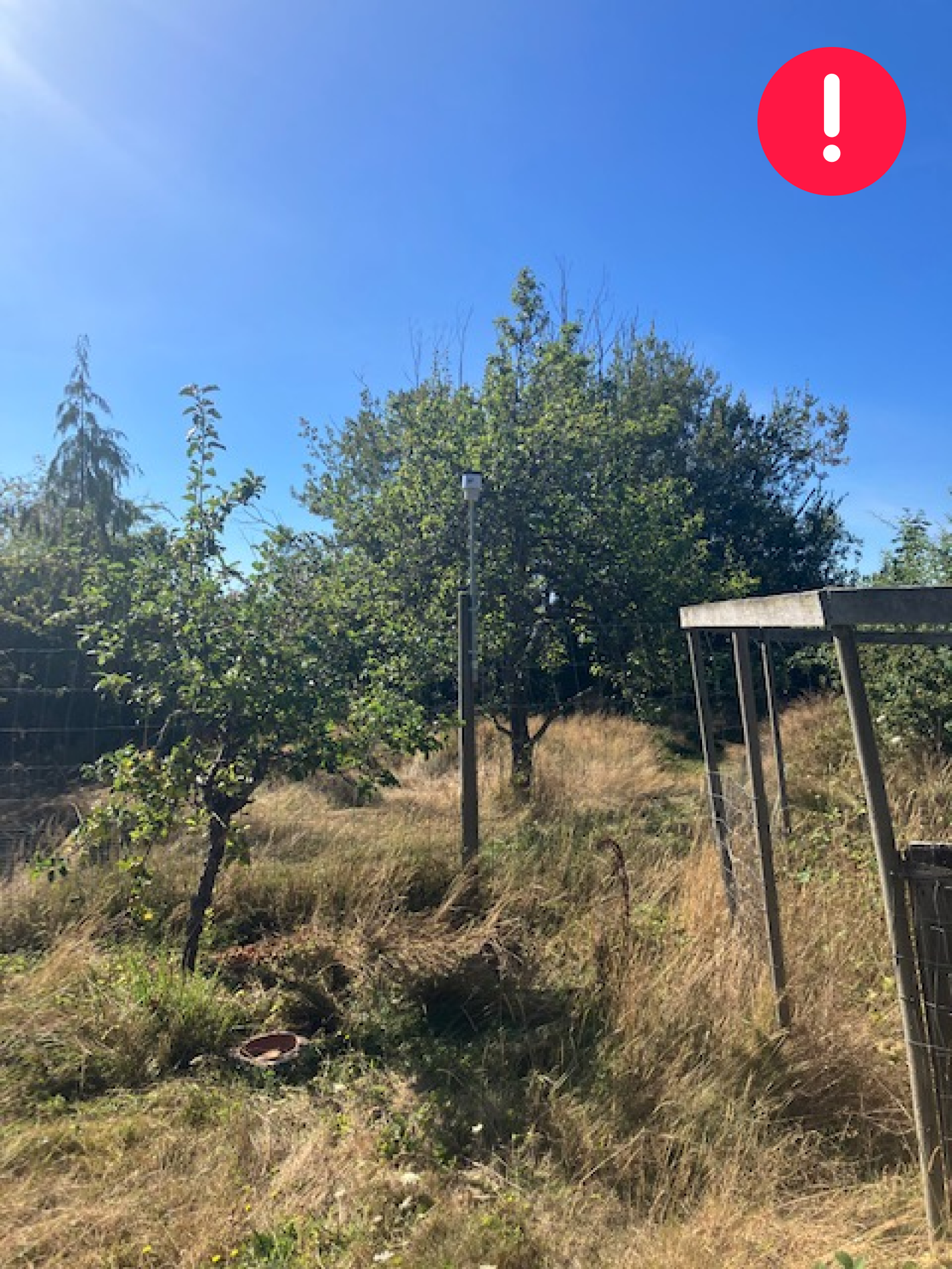
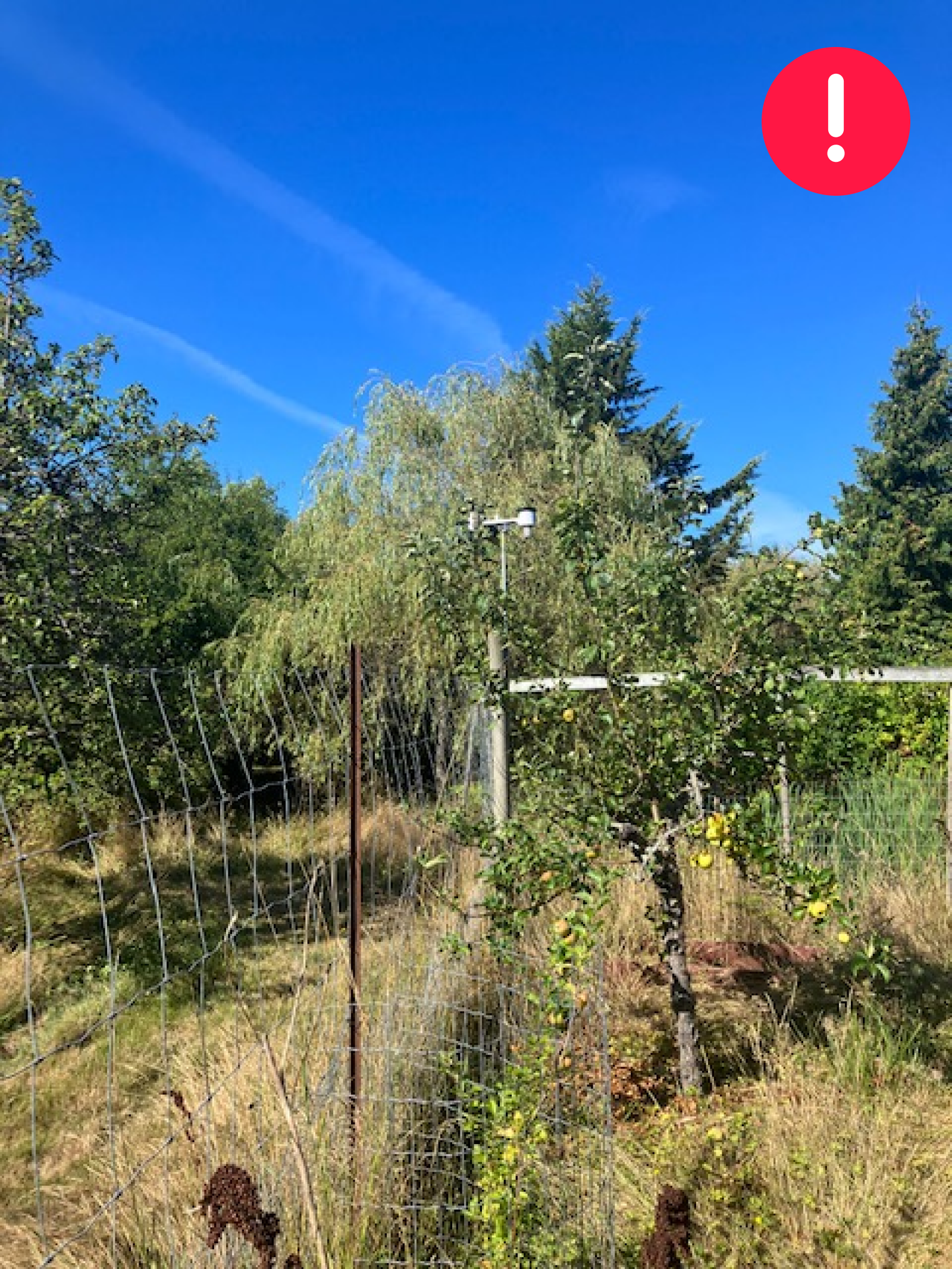
Photos showing from left to right the East - North - South - West horizon of the outdoor sensor. The last photo at the bottom shows Google Maps top view of the area together with distances from the surrounding obstacles
The station sits in an area surrounded by tall trees some of which are too close to the station especially to the south and west.
The trees at the west and south have a significant impact on wind speed/direction (block the flow), solar radiation (as they shade the sensor), rain measurements (e.g., rain with south wind will be underestimated as trees create a “rain shade”), temperature and humidity possibly in a more insignificant way (as sun turns from east to west through the day, the sensor will differentially be shaded from time to time recording variable and changing temperature and humidity).
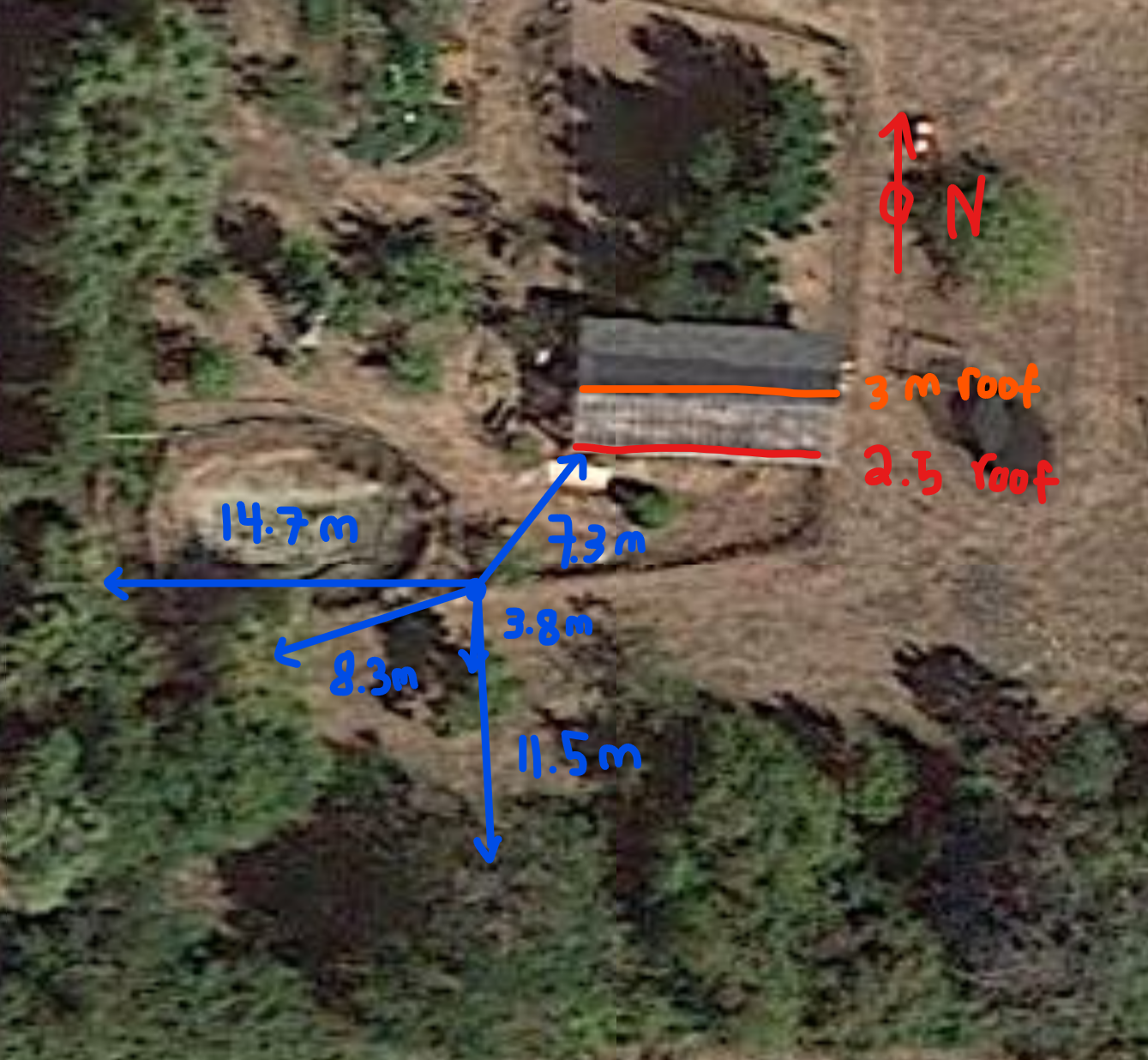
The station could ideally be moved to the roof of the nearby building (using a 3-4m-mast) in order to be placed as higher as possible to avoid at least the closest obstacles. Otherwise (if there is no other available place) a 5-7m-mast could be used at the same place in order to place the weather station above the level of the closer obstacles.
Case 7
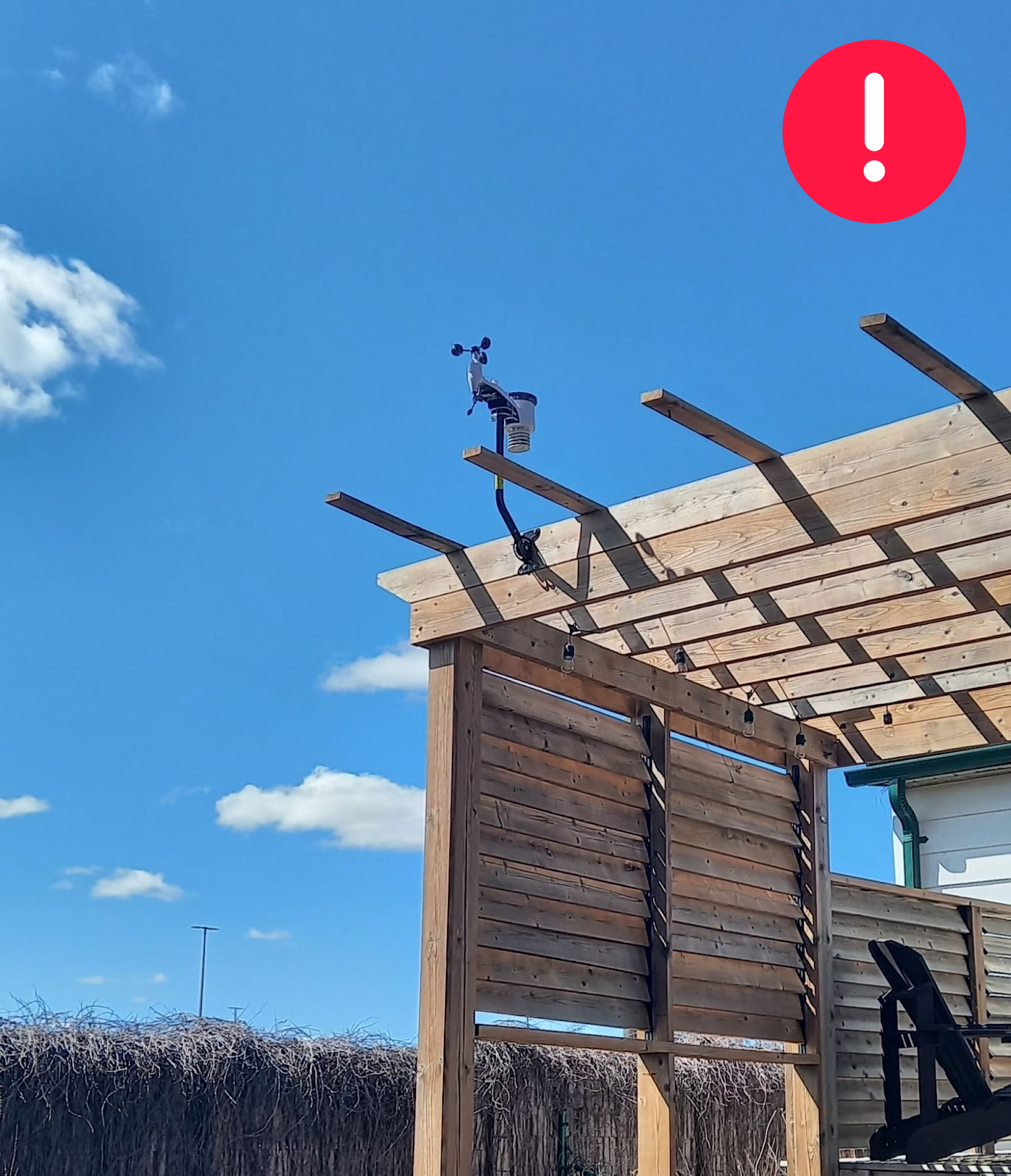
The station is placed just a few tens of centimetres over a wooden structure. From this photo it is unknown if there are any obstacles at the north-east-south.
The wooden structure may cause turbulent air flow that would have a significant impact on wind measurements. If there are obstacles at the blind side, they could affect measurements in variable ways.
The outdoor sensor should be placed on a higher mast (at least a 2m one) over the wooden structure. If there are higher buildings etc around, the sensor should be moved at the highest possible point (always using a at least 2m mast).
Case 8
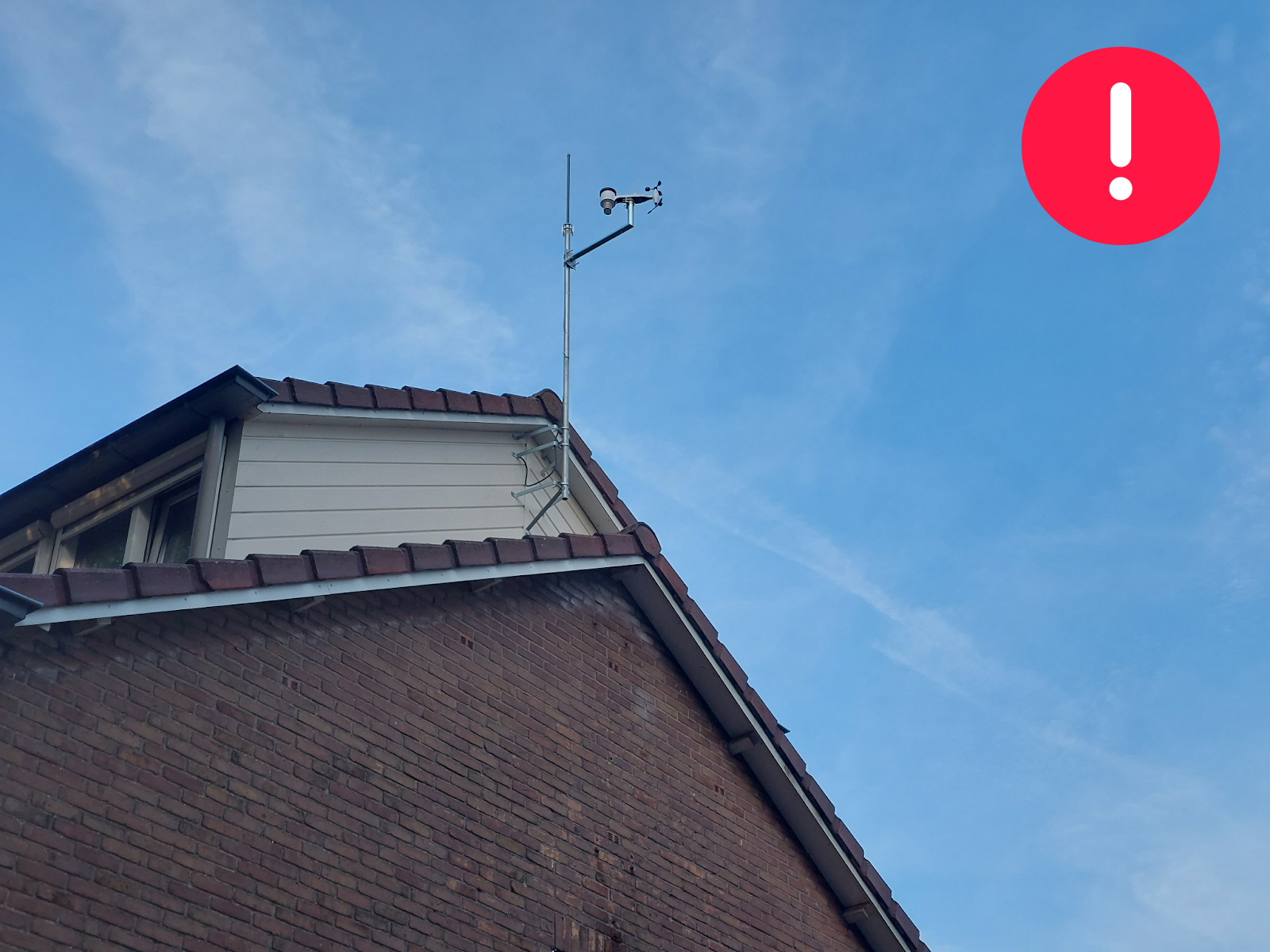
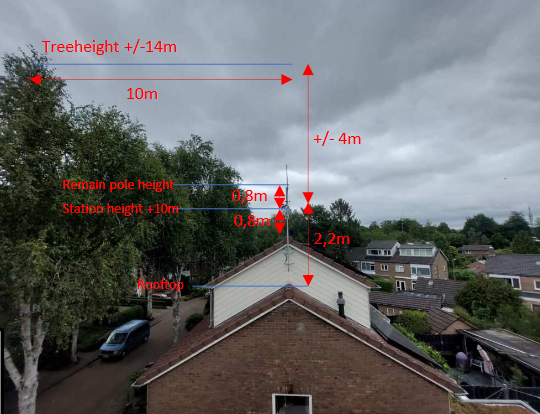
Photos show before (left) and after (right) of the deployment of a station in order to optimise its position.
The station is placed on the roof of a building, but there are tall trees to the west.
Tall trees will affect rain and wind measurements when wind blows from the west. According to WMO a wind gauge should be placed at a distance 10 times the higher obstacle height.
The user moved the outdoor sensor higher by ~1m increasing the distance-height ratio (distance from obstacle/ height of obstacle-height of outdoor sensor) from 2 to 3. In such a case there’s no better solution than that. Ideally, the mast should be 4-6m above the roof, but the maintenance may not be a safe job.
Case 9
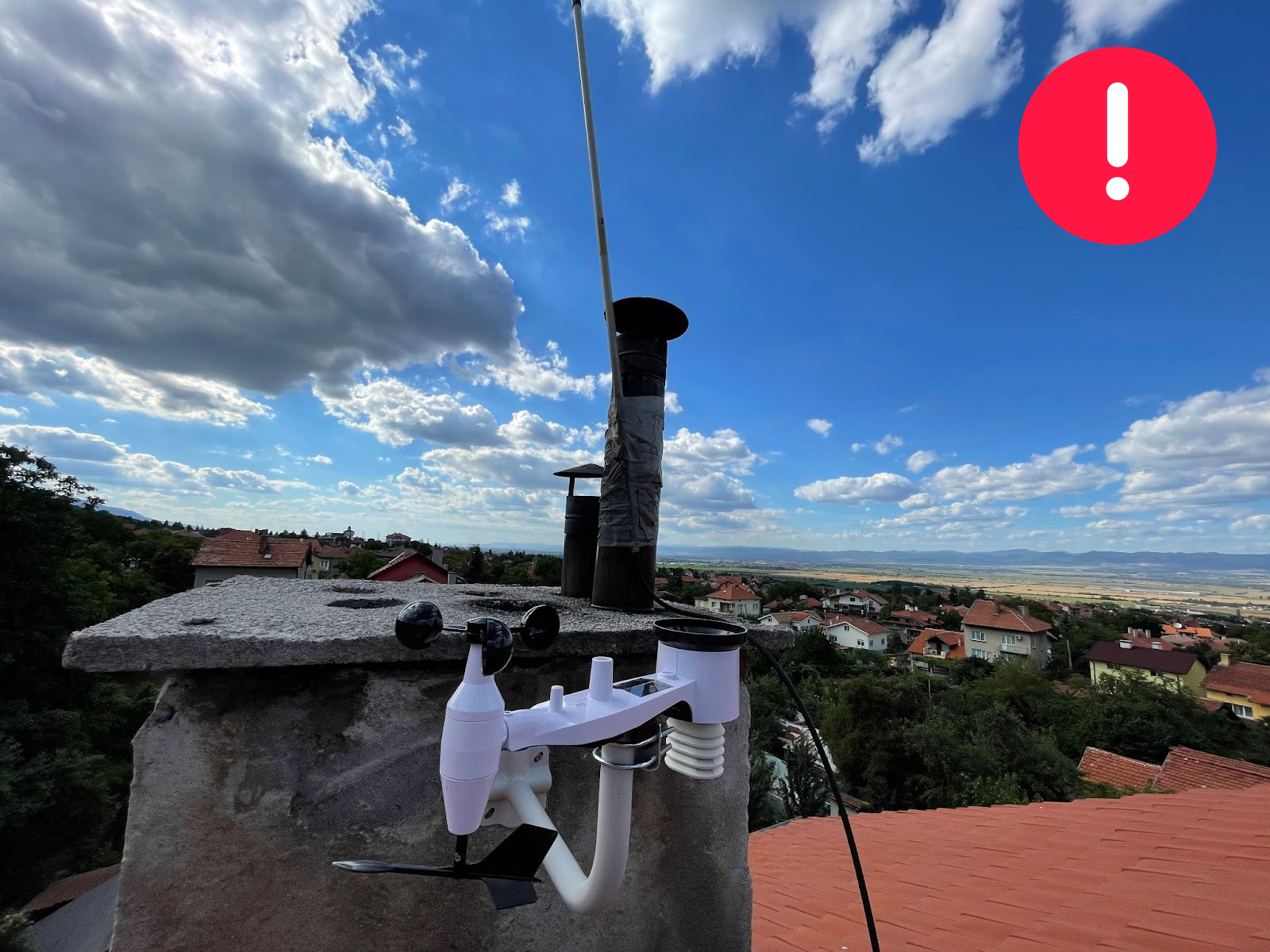
The station is deployed on the east side of a chimney structure below its top level and close by chimneys.
The structure causes rain and especially wind shade. Wind speed and particularly wind direction may significantly differ from the actual situation even when wind blows from other than west directions. Moreover, if the chimney is active, temperature will be systematically higher.
In case that chimney is inactive, the outdoor sensor should be placed at the same position but on a (at least) 2m mast. If the chimney is active, then the sensor should be placed at least 5 meters away and again on a 2m (or more) mast.
Case 10
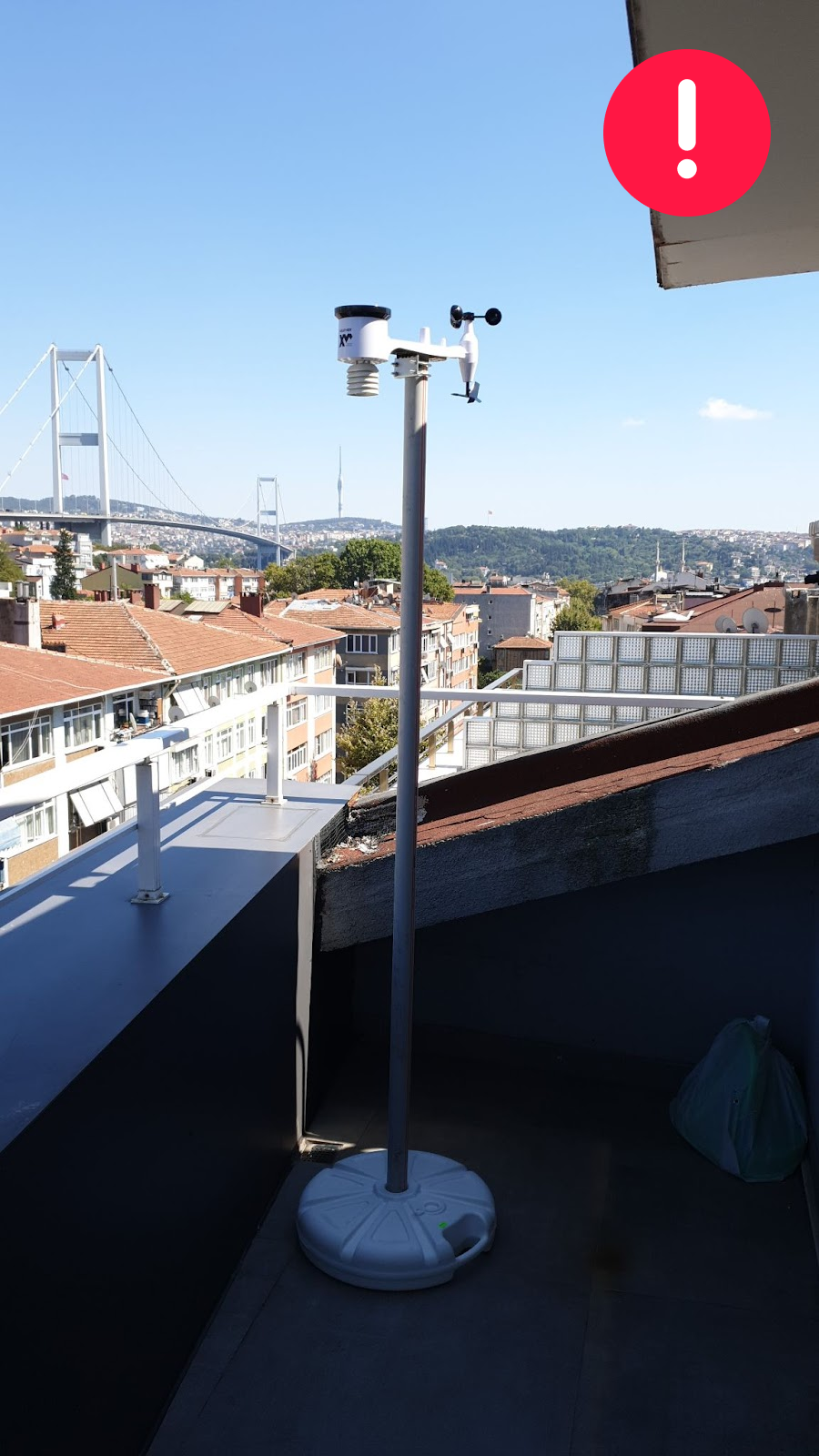
The station is deployed on a balcony with a wall and a roof being fairly close (to the west).
The roof and the wall are significant obstacles affecting all of the measured meteorological parameters (e.g., missing rain episodes, incorrect wind speed and direction, increased temperature).
A balcony is not a place for a weather station. The station should be moved to the roof of this apartment following the general guidelines.
Case 11
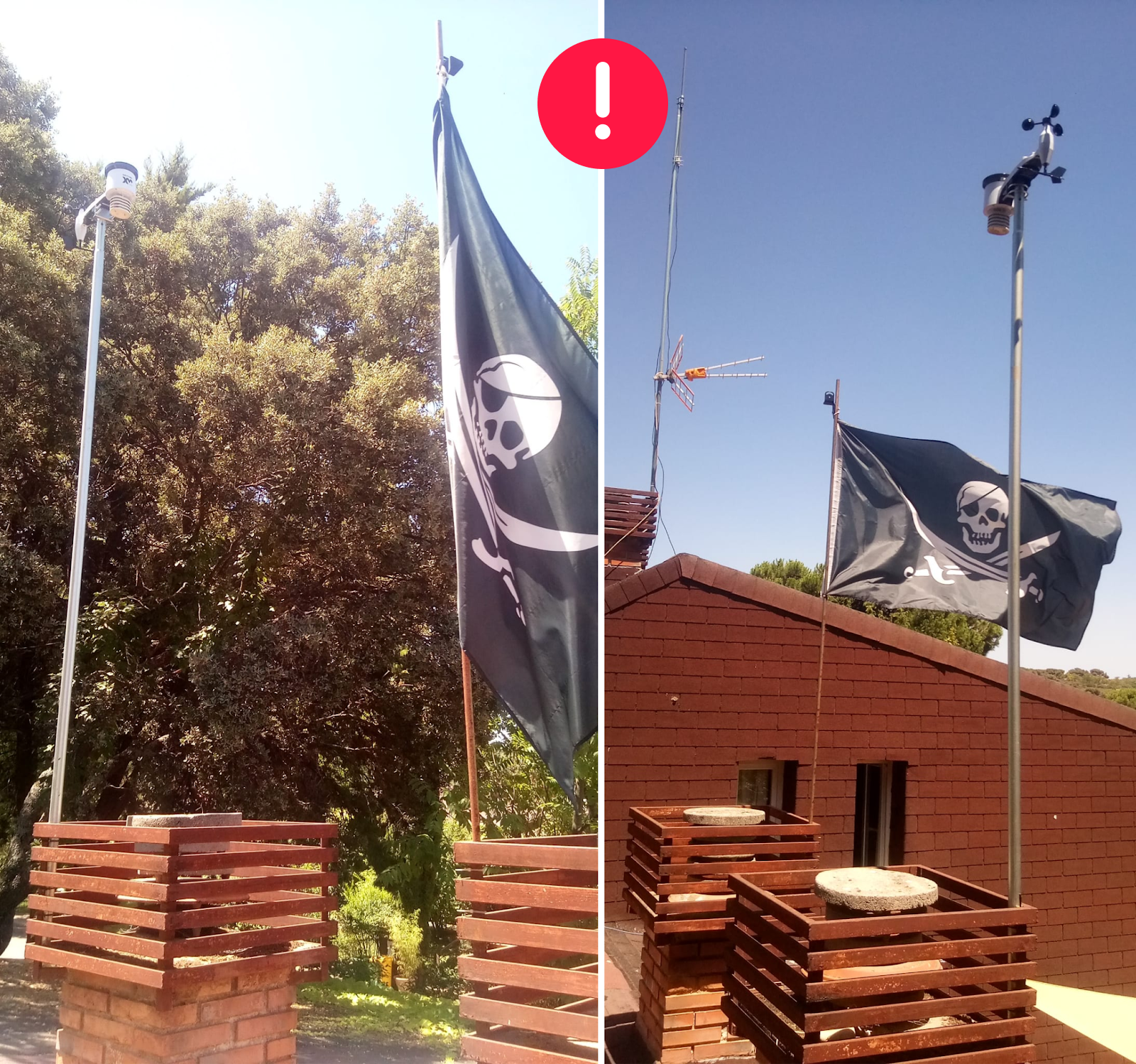
The station is deployed on an appropriate mast, but it is not at the highest possible point of the area (there is a higher building to the north and tall trees to the south). There is also a chimney below it.
If the chimney is active, then temperature will be systematically increased. Due to taller obstacles around, wind and rain will include significant errors.
The station should be moved to the higher roof as far as possible from the chimneys on a tallest possible mast in order to skip the tall tree obstacle to the south.